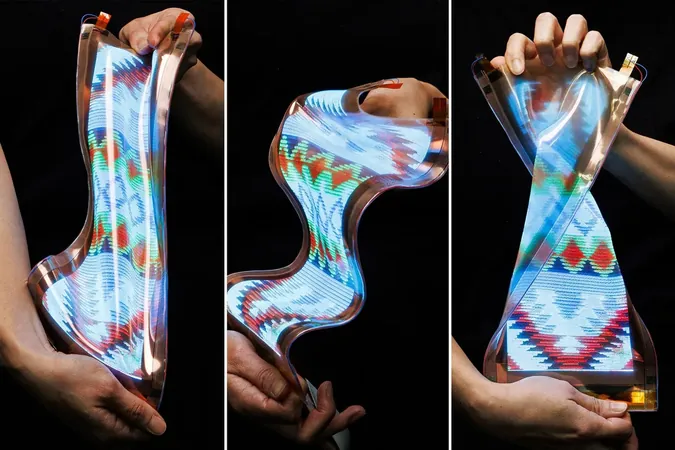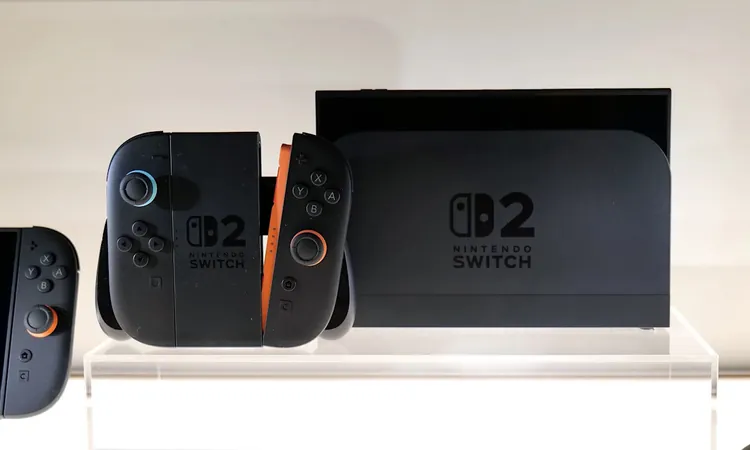
Stretchable Electronics: A Revolution on the Horizon by 2025!
2024-12-27
Author: Sarah
2024 marked a monumental year for stretchable and wearable gadgets, as researchers around the globe achieved groundbreaking advancements that are set to transform the landscape of soft electronics and power sources.
From self-healing batteries to high-precision sensors, the world is witnessing a technological renaissance that promises to bring us closer to devices that seamlessly integrate with our bodies.
Exciting Developments in Self-Healing Batteries
One of the most exciting developments emerged from China, where engineers introduced a revolutionary self-healing, stretchable lithium-ion battery. Imagine never having to worry about your wearable tech running out of juice or becoming damaged! This novel battery technology could power next-gen wearables that adapt to our everyday lives, paving the way for more resilient products.
Stretchable Screens — A New Frontier
Meanwhile, LG Display showcased a spectacular stretchable screen that extends from 12 to an astonishing 18 inches, indicating a potential future where displays can effortlessly shape themselves to fit clothing or even automotive dashboards. The implications are vast: first responders could wear uniforms equipped with expandable screens to display critical data in real-time!
Sensor Arrays: Next Level Wearable Technology
In a stunning leap forward, a team led by Stanford University developed high-density stretchable sensor arrays boasting over 2,500 transistors per square centimeter. Remarkably, these arrays maintain their functionality when bent, twisted, or compressed. Just imagine a health-monitoring patch that sticks to your skin, capturing vital data such as heart rate, muscle signals, and glucose levels, all while feeling like a second skin. This advancement sets a new standard for wearable technology that transcends traditional fitness tracking.
Bendable and Expandable Displays — The Future is Now
Industrial labs are also hard at work creating displays that can stretch by up to 50%. Thanks to innovative manufacturing processes involving soft transfer printing and advanced 3D fabrication techniques, tiny light-emitting diodes (LEDs) remain operational even when significantly deformed. The potential applications are sky-high — from smart clothing to automotive components, this technology could revolutionize fashion and transportation alike.
Key Fabrication Methods Driving Progress
In a critical review published in npj Flexible Electronics, researchers elaborated on the four key fabrication methods driving this progress: printed electronics, soft transfer, 3D structural fabrication, and deformation fabrication. With these advancements, wearables will become more durable, scalable, and capable of maintaining a reliable connection with our bodies — improving accuracy in monitoring our physiological signals.
Revolutionary Hydrogel Semiconductors
Adding to the list of amazing innovations, scientists at the University of Chicago have produced a hydrogel that doubles as a semiconductor. This groundbreaking material bridges the gap between living tissue and conventional electronics, boasting both flexibility and the capability to transmit signals. The implications for medical technology are profound—this hydrogel could allow for the development of advanced implants like pacemakers and drug-delivery systems that are comfortable and compatible with the human body.
Game-Changing Conductive Nanocopper Ink
Innovations in conductive materials are surging as well! A team from Harbin Institute of Technology has developed cutting-edge copper nanoparticles, achieving impressive conductivity levels through a unique low-temperature sintering process. This new formula not only addresses challenges related to oxidation resistance but also enhances the precision of printed electronics.
A New Era for Soft Electronics
Further fueling this wave of innovation, researchers from Virginia Tech have introduced a novel method for creating soft electronic connections across circuit layers without the need for drilling. Using a unique approach involving ultraviolet exposure, they’ve managed to fabricate robust electrical conduction channels that can withstand bending and twisting, paving the way for advancements in soft robotics and wearable health monitors.




 Brasil (PT)
Brasil (PT)
 Canada (EN)
Canada (EN)
 Chile (ES)
Chile (ES)
 Česko (CS)
Česko (CS)
 대한민국 (KO)
대한민국 (KO)
 España (ES)
España (ES)
 France (FR)
France (FR)
 Hong Kong (EN)
Hong Kong (EN)
 Italia (IT)
Italia (IT)
 日本 (JA)
日本 (JA)
 Magyarország (HU)
Magyarország (HU)
 Norge (NO)
Norge (NO)
 Polska (PL)
Polska (PL)
 Schweiz (DE)
Schweiz (DE)
 Singapore (EN)
Singapore (EN)
 Sverige (SV)
Sverige (SV)
 Suomi (FI)
Suomi (FI)
 Türkiye (TR)
Türkiye (TR)
 الإمارات العربية المتحدة (AR)
الإمارات العربية المتحدة (AR)